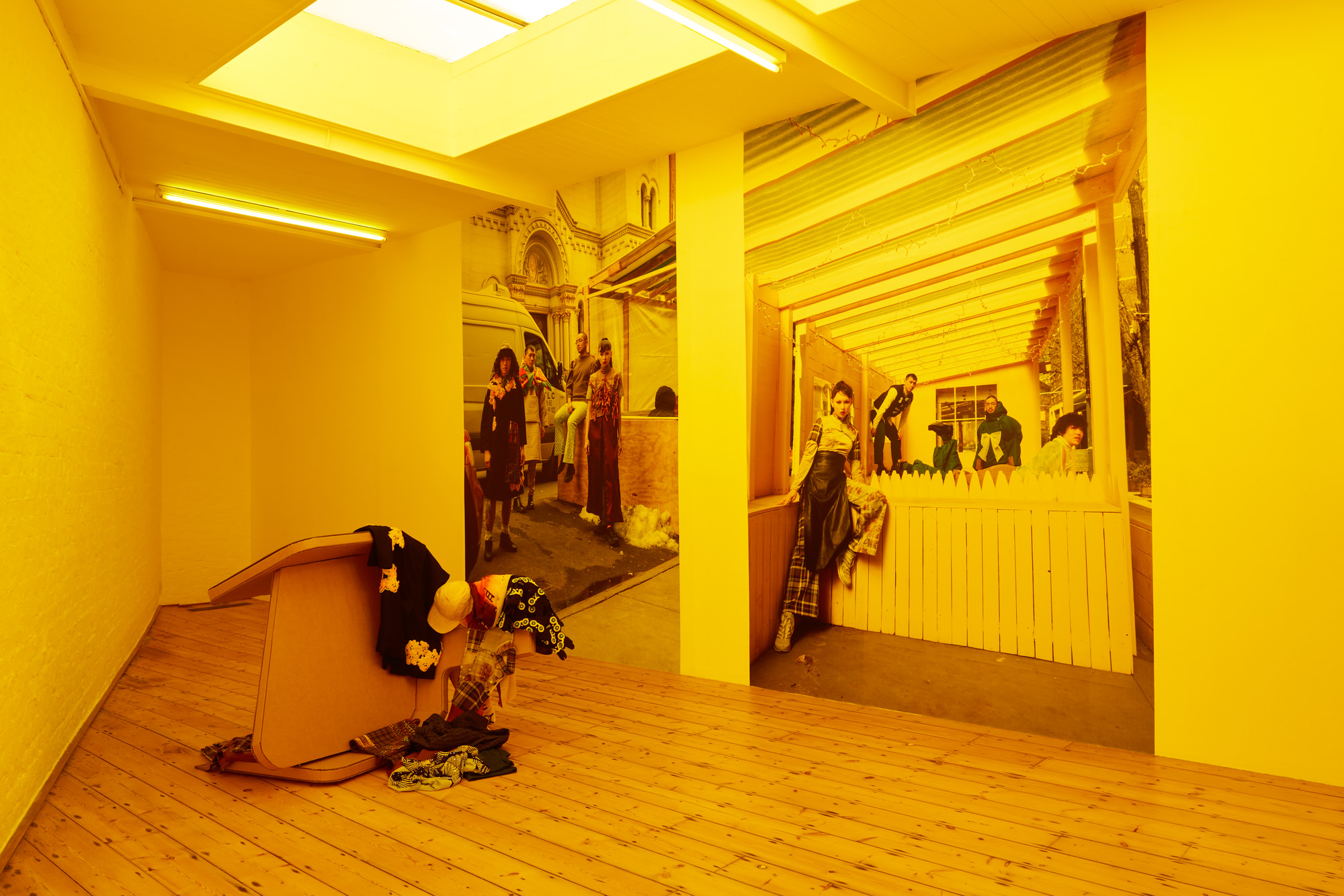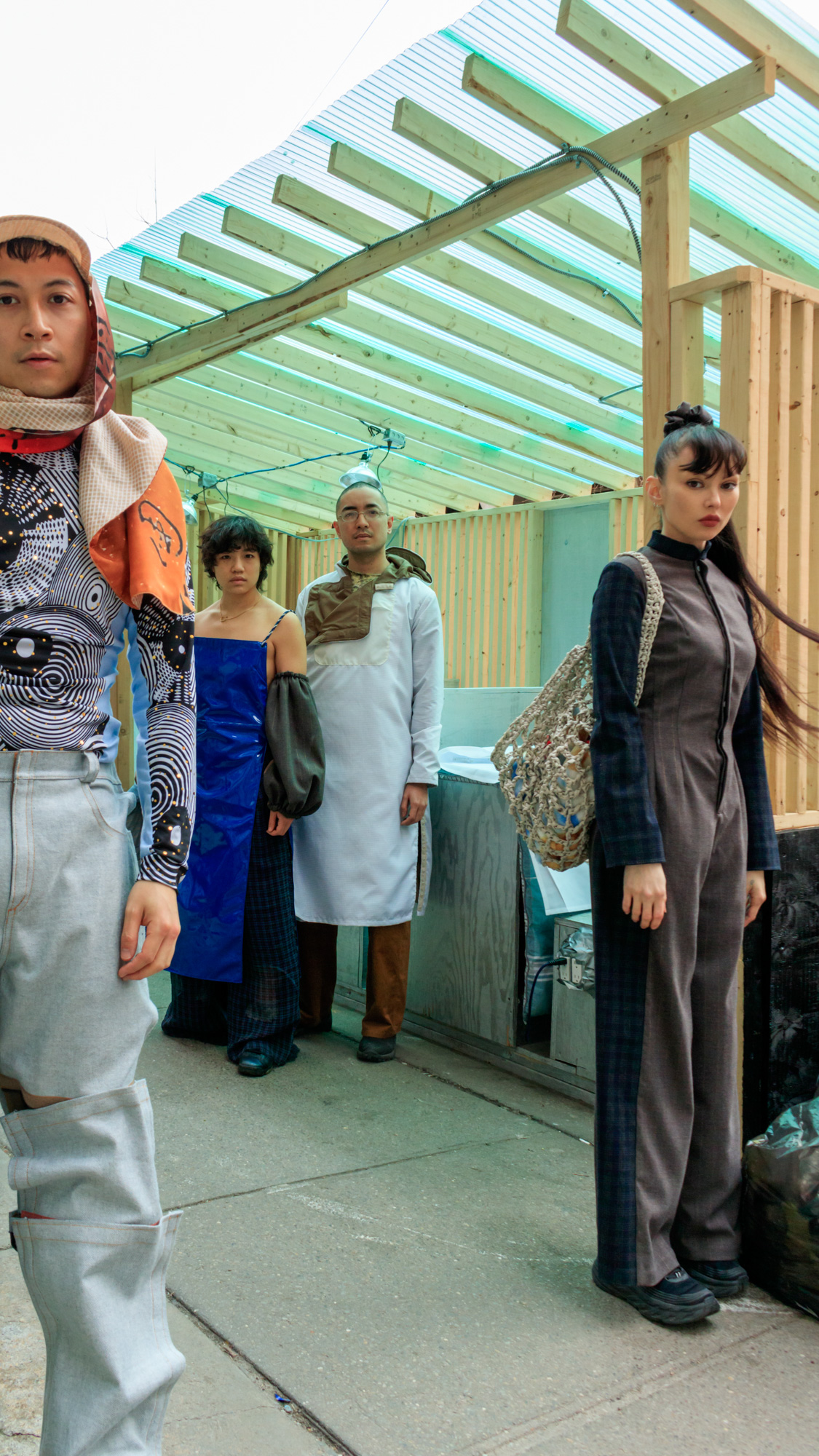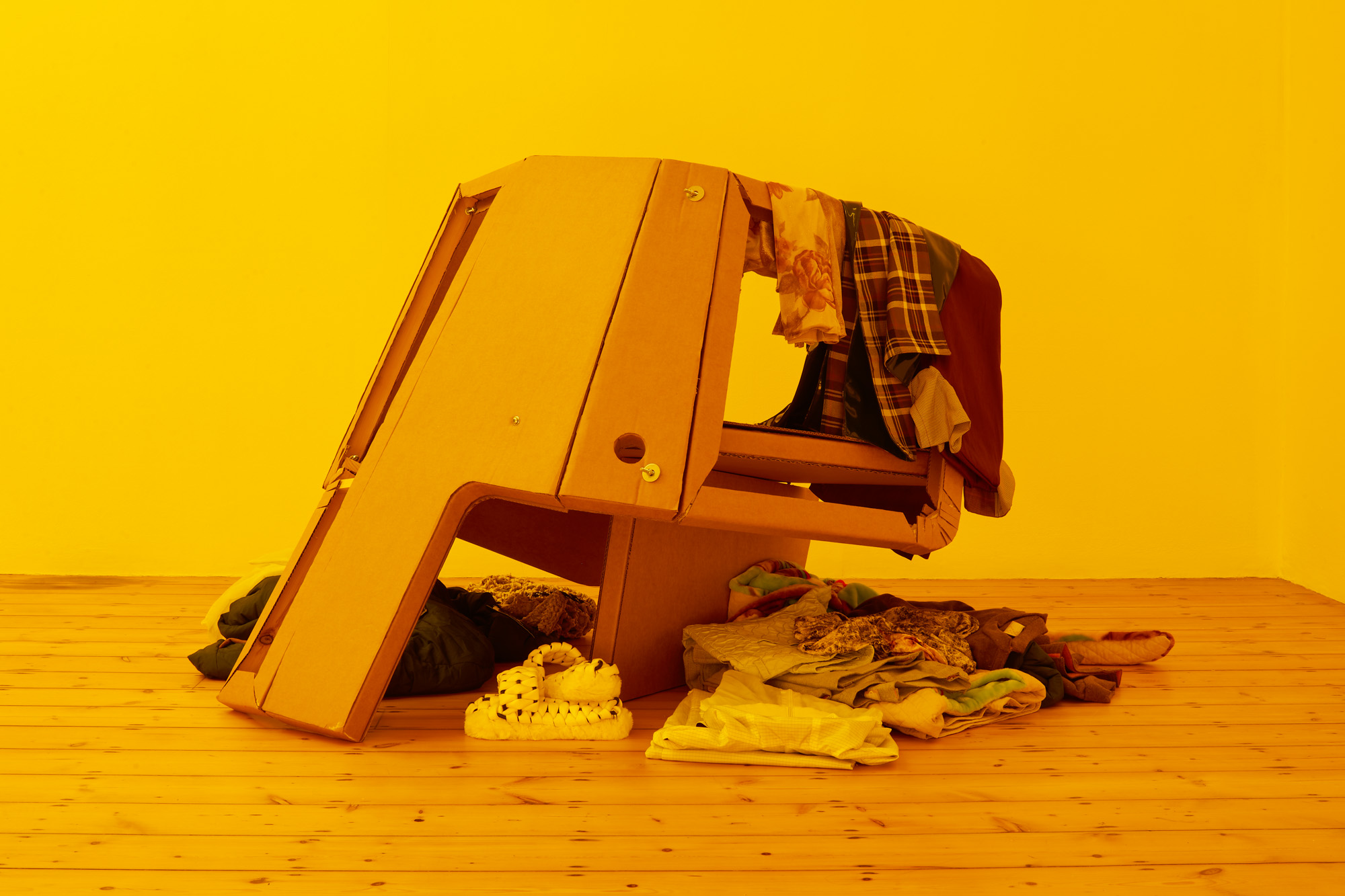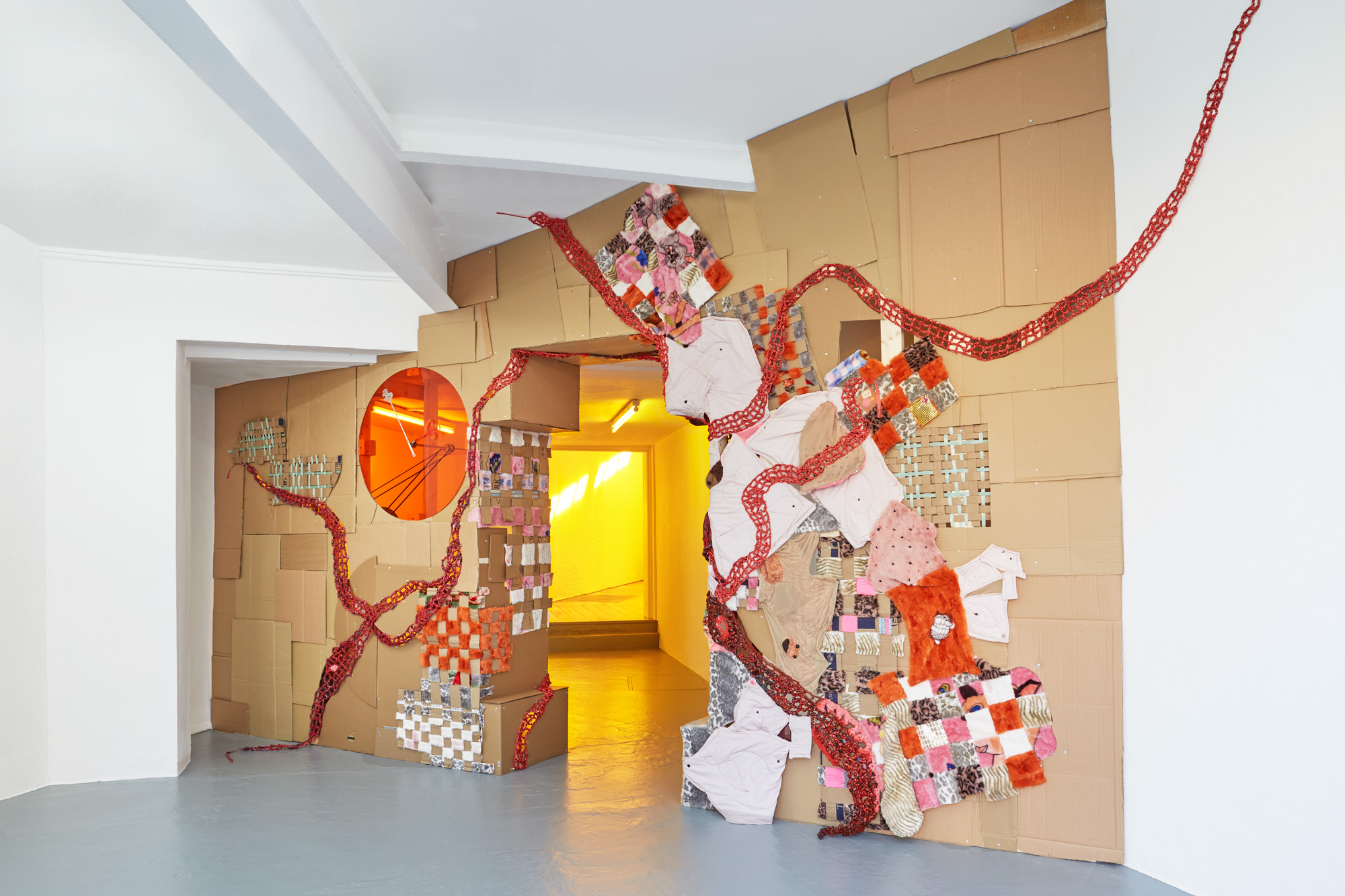“Collecting Dissonance” at Auto Italia
By Christopher Whitfield

Installation view of CFGNY
CFGNY look super cute. Staring out of the three large-scale editorials on the walls of Auto Italia’s East London project space, the avant-fashion collective appear untouchably at ease, dressed in outfits that mingle workwear, activewear, and club looks into a collage of print and leather, ribbons and quilting. It’s not the first time the group have played with ideas of cuteness. Their 2018 collection “New Fashion II” embraced and weaponized the much-trivialized aesthetic principle so close to the heart of many Asian popular cultures, stitching plushies into the sheer fabric of the garments like armor. However, in “Collecting Dissonance”—the New York collective’s first exhibition in London—the dissection of this and other notions of Asian-ness became a condition of entry, with cartoony textiles and stuffed Pokémon disassembled and re-stitched into a patchwork archway that cordoned off the show. The artists moved through their gleeful reclamation of tropes, and were able to carve out a space that united those of diasporic experience in a reflection on the ways that racialized bodies become entangled with the clothes that we wear.
In “Vaguely, Authentically, and Ubiquitously Asian,” one in a series of musings commissioned to accompany the exhibition, New York University professor Hentyle Yapp recounts the experience of their body in clothes. Specifically, they observe the ways in which racialized bodies reciprocally change and are changed by the garments that they put on; how connotations slip in at the seams, so subtly that it’s hard to put a finger on, but mark the wearer’s body as “other” nonetheless, reducing their clothes to a costume. Yapp regales us of this in their own context, remembering unwitting personal transformations into a service worker or martial artist, among a handful of other “vaguely Asian” stereotypes. However, the experience also rings true for other racialized subjects, for whom slipping into the wrong pattern, cut, or accessory—that on a non-racialized body might remain “neutral”—risks a transformation into something distinctly, or perhaps generally, other than oneself. Through their playful habitation of the space, CFGNY modeled a flippant disidentification that at once relishes in and subverts this phenomenon.

CFGNY, Collecting Dissonance, 2021, mixed media, dimensions variable. Courtesy the artists.
The light that beamed in through the gallery's glass ceiling was aggressively idyllic, the concentrated color of an entire summer's worth of golden hours. Perhaps CFGNY's tinted windows were a savvy refocusing of the gritty yellow filter that Western filmmakers have been accused of casting on the global South. The light distorted the space, complicated the skin, and forced the audience to receive the group's photographs on their own unfixed terms. On the floor below, the garments from these images were tossed over cardboard chairs. The furniture’s unusual origami architectures appeared as if in the middle of unfolding, hinting at shifting bodies and their shifting comforts. It was precisely this liminality that imbued the work, and the outfits that littered the floor, with their powers of challenging the “vague.” The clothes themselves reverently referenced ao dai and qipao, were embellished with bows and obi, or detailed with mascots of mass-produced kawaii. In partnership with their tailors in Vietnam, the New York collective patterned, cut, and styled their pieces to evoke their own experiences of clubs, art spaces, and the company of queer family—contexts the artists have created for themselves in the city they call home. They refute the simple essentialism of “vague” interpretations, highlighting instead the rich palimpsest of diasporic experience. Whether willfully cast off, or waiting to be picked up and worn once more, the piles of garments belonged to the life of a figure who dressed themselves with agency.

Installation view of CFGNY
Of course, to consider the interplay between clothes and racialized bodies in such a way is a labor. Intervening in the ways that the ideology of White-supremacist society encodes itself on the non-White body and inflects self-expression is hard work. Embedded in the wall of the exhibition's entryway was a clock cut from orange plexiglass. It ticked along irregularly, wound by water dripping at its own pace from one plastic tank to another. When the tank was full it flushed, and the clock ran backwards until time in the gallery was reset. Time has always been attendant to the labor of racialized subjects, be it the burden of quick assimilation, or the unequal responsibility of production for the ever-growing appetite of global capital. In their sabotage of the proverbial punch-clock, CFGNY emancipate their diasporic audience, their global collaborators, and those who are like them from the auspices of optimised time. In “Collecting Dissonance,” the collective’s cheeky unsettling of space and temporality made way for irreverent fashion, and nuanced expression of all diasporic subjects, on their own terms.

Installation view of CFGNY
CFGNY’s “Collecting Dissonance” is on view at Auto Italia, London, from May 21 to August 22, 2021.
%20x%20135(H)%20px-03Rc-72dpi%20(2).jpg)






